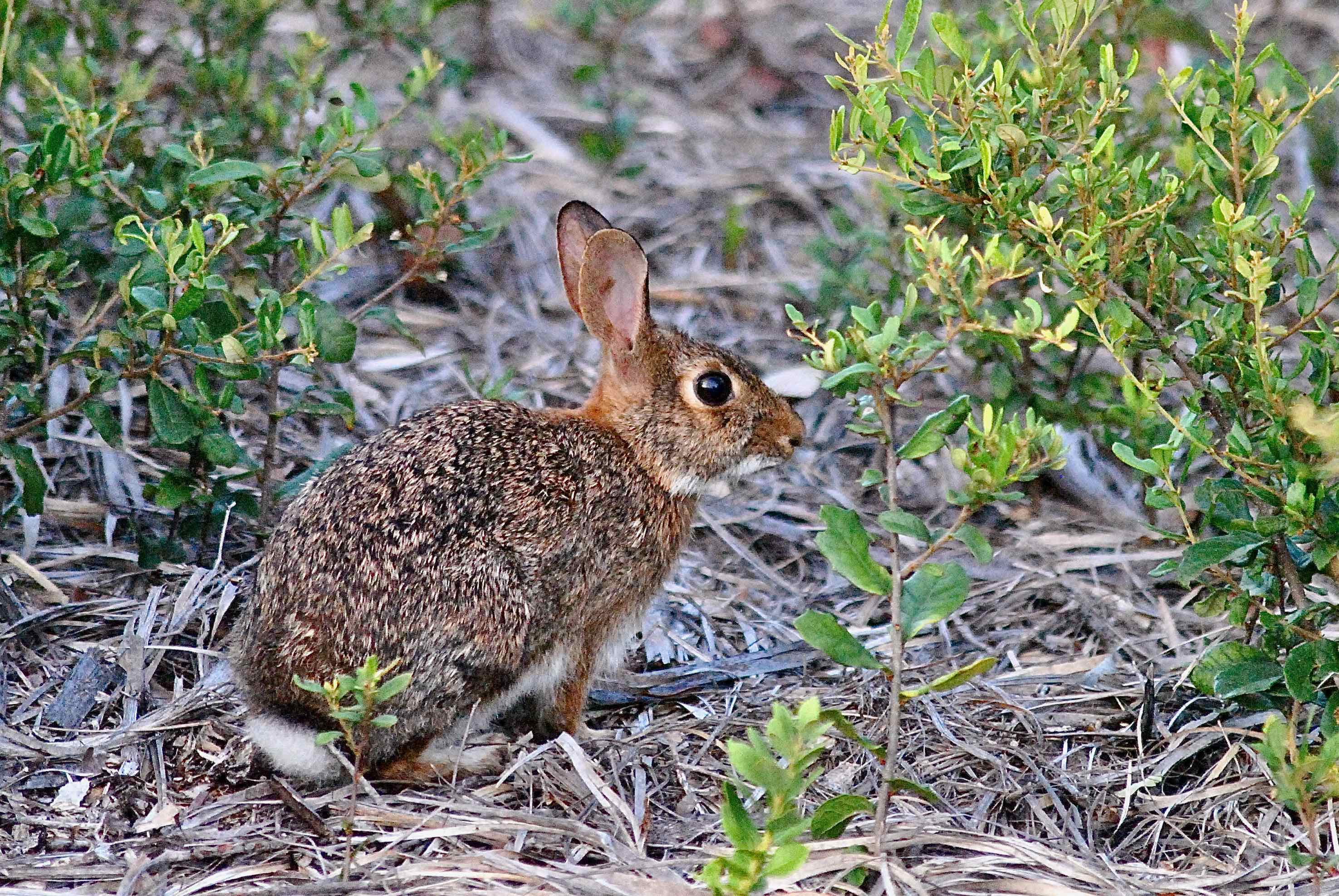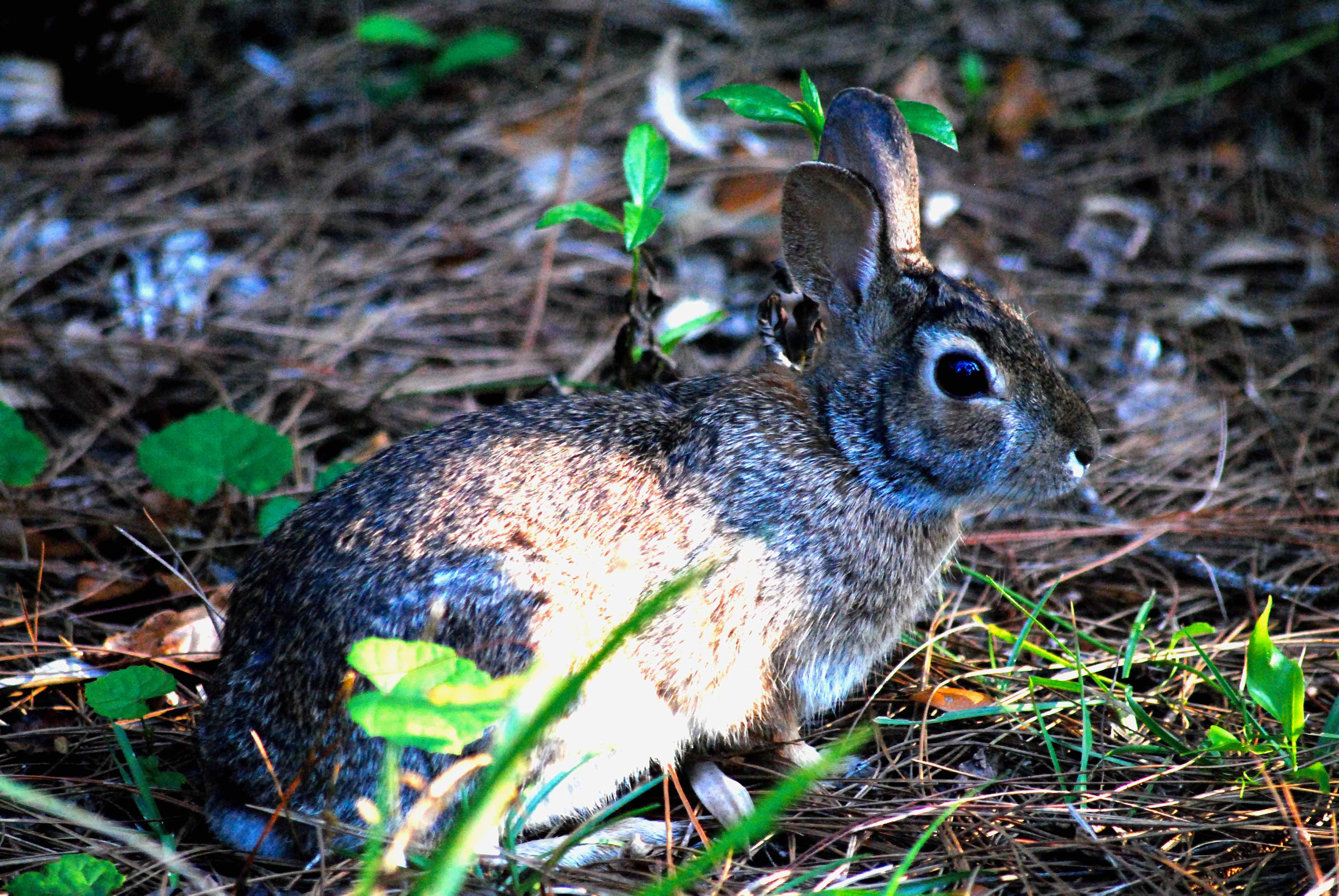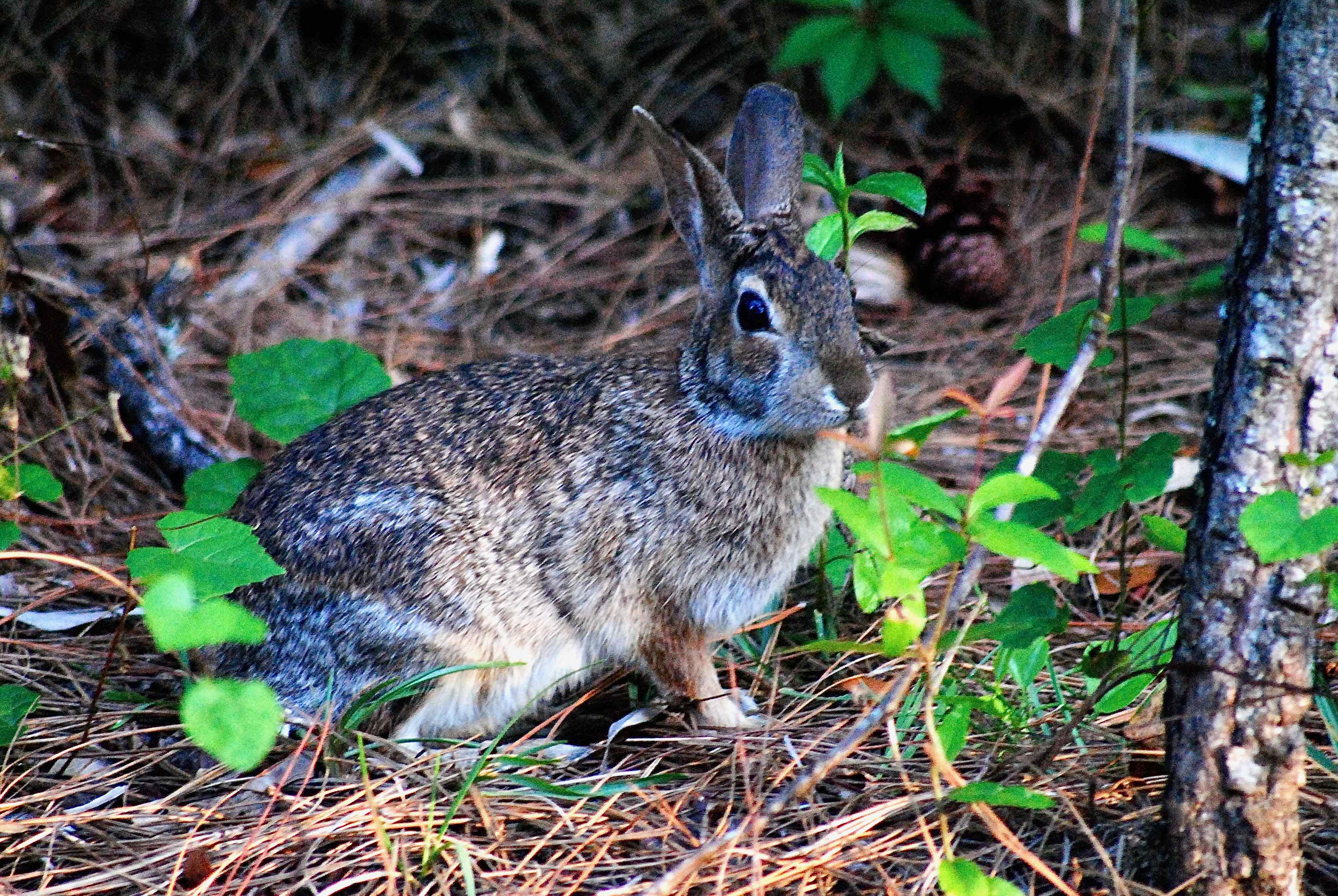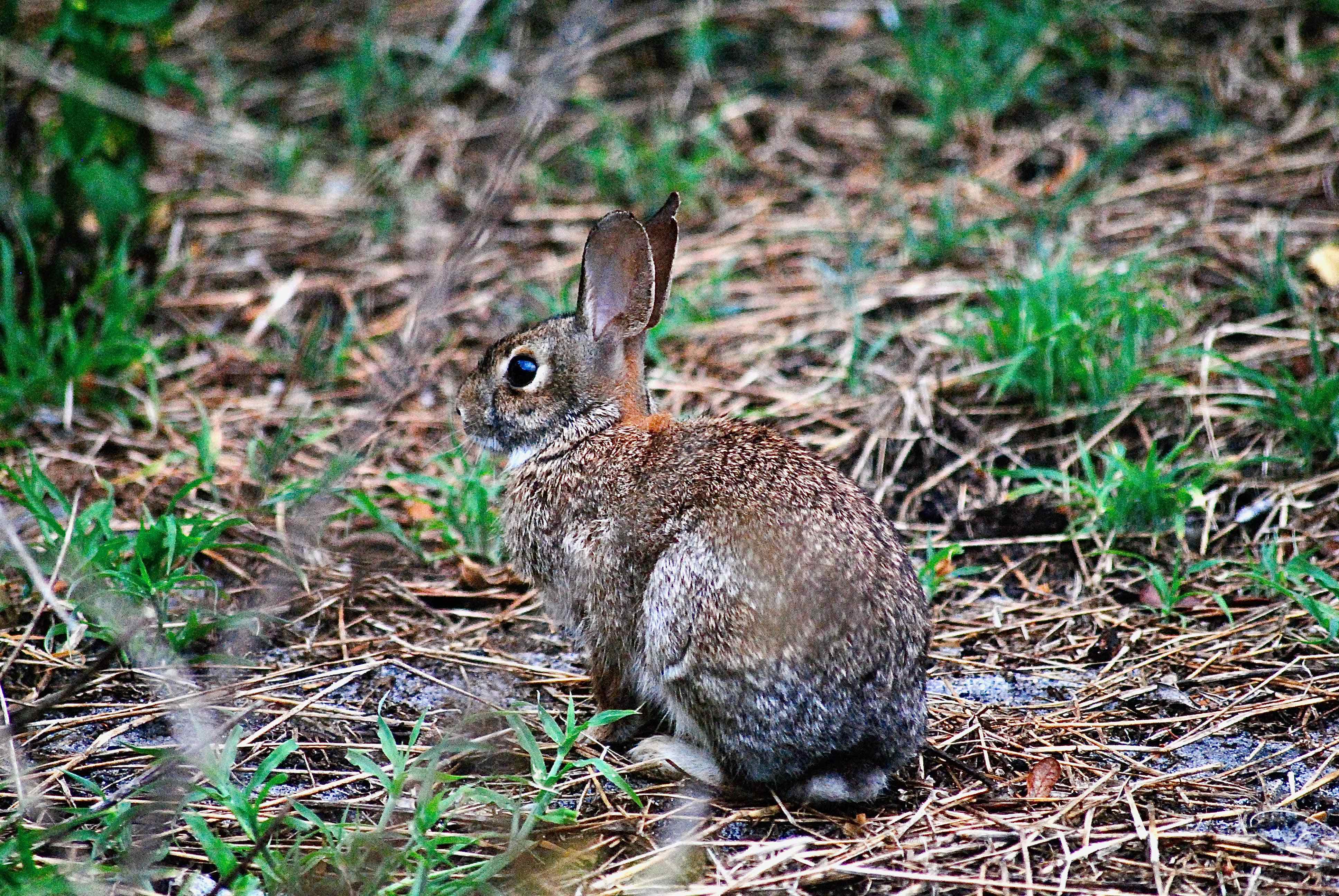
Eastern cottontail rabbit, photographed at Yamato Scrub Natural Area, Boca Raton, Palm Beach County, in July 2015.
The eastern cottontail, Sylvilagus floridanus, likes it dry. Its cousin, the marsh rabbit, Sylvilagus palustris, likes it wet.
That, in a nutshell, is the major difference between the two rabbit species that call Florida home. Our guy here, the eastern cottontail, is more likely to to be found in drier places, like scrubs, fields and forests. The marsh rabbit, as the name implies, is more likely to be found in wetlands and swamps. Both rabbits are nocturnal, although the Florida Fish and Wildlife Conservation Commission says the marsh rabbit is more likely to be seen during the day.
Habitat isn't the only difference between the two. Some say the eastern cottontail rabbit is slightly larger, with a body length of 14 to 17 inches and weighing between two and four pounds. But at least one source attributes the size difference to the fact that the cottontail has more hair than the marsh. Really. Essentially the cottontail only looks bigger.
But the most visible difference is the cotton ball-like tail that the eastern sports. You can't miss it. The tail on the marsh rabbit, on the other hand, is darker and on the inconspicuous side.
The eastern cottontail is found over most of North America and even parts of South America. It ranges into southern Canada, through the United States from the Central Plains to the Atlantic Coast.
In Florida, eastern cottontails breed throughout the year, but the peak is between February and September. A female (called a doe) can have three or four litters of four to seven young each during the year. Gestation is 26 to 30 days. The nest is a grass- and-fur-lined depression in the ground. Males, by the way, are called bucks. They molt twice a year, producing a light summer coat in spring and a heavier winter coat in fall.
The rabbits are born blind and hairless, but grow rapidly. They're weaned roughly between their second and third week. By seven weeks, the kids grow intolerant of their siblings and start to go out on their own. Mom, meanwhile, usually mates soon after delivering her brood and is pregnant while caring for them. By the time her first litter disperses, she's ready to give birth to a second.
All rabbits are vegetarians. Eastern cottontails prefer green plant parts in the warmer months but will eat young, woody parts and even bark if necessary.
They are solitary animals and don't tolerate others of their kind within their territory. A female might claim between one and 15 acres; a male might stake out as much as 100. Males and females go through a pre-mating ritual called cavorting, which can include running, hopping and even fighting, usually at night.
Their lives are short, usually no more than three years in the wild, but they've been known to live as long as eight in captivity. It takes a cottontail a year to reach sexual maturity.
As might be expected, cottontails are tasty treats for a long list of predators, including hawks, owls, foxes and bobcats. Elmer Fudd is not a predatious threat, but other human hunters are.
Eastern cottontails are members of Leporidae, the family of rabbits and hares.
Yamato Scrub Natural Area



